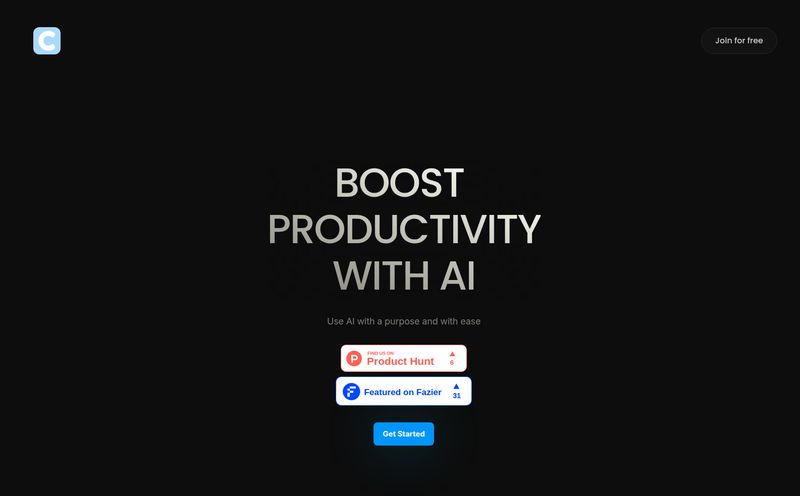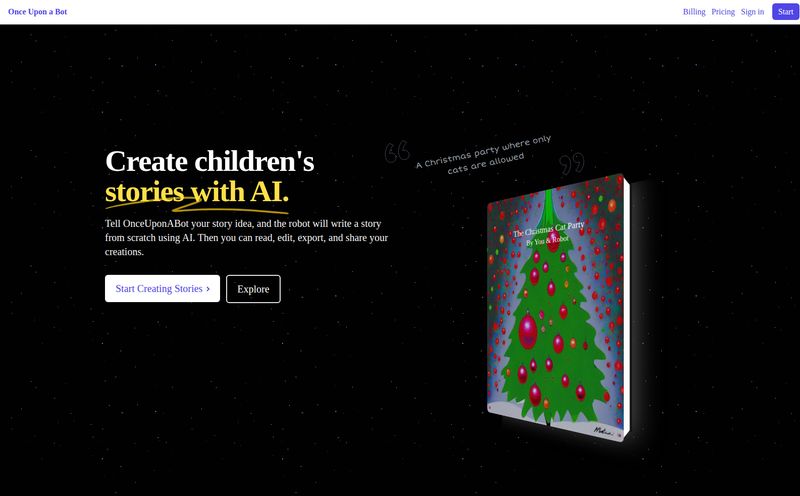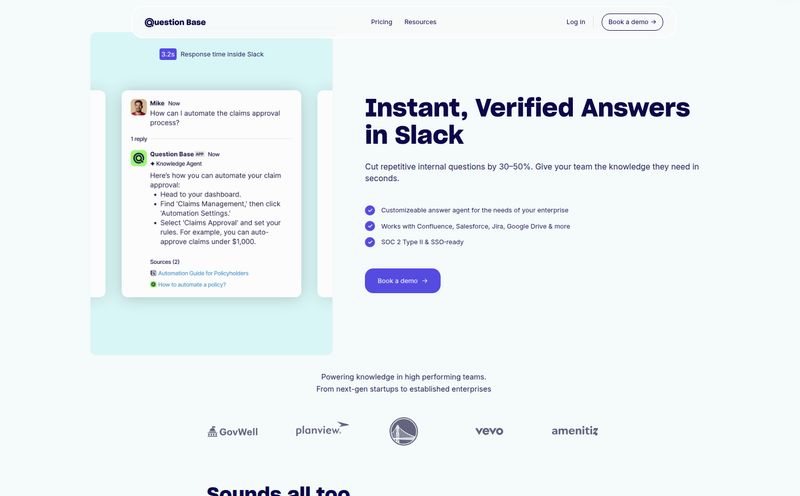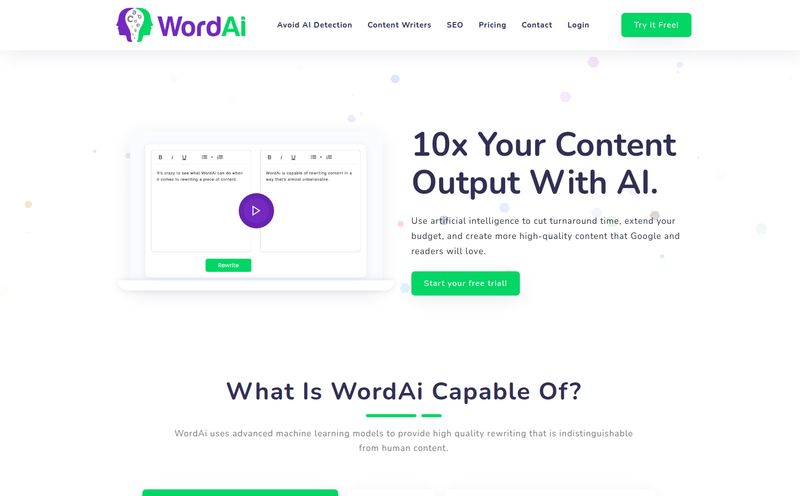If you've ever tried to launch a project, you know the feeling. You have this brilliant front-end idea, the UI is slick, the user experience is mapped out... and then you hit the wall. The backend. The sprawling, unseen monster of databases, server logic, API endpoints, and authentication that can turn a fun project into an absolute slog.
I've been there more times than I can count. Spending weeks wrestling with server configurations, trying to get different services to talk to each other, and writing endless boilerplate code. It’s the part of the job that can drain all the creative energy out of you. That's why, as an SEO and traffic guy who constantly needs to spin up new tools and automations, my ears always perk up when I hear about a new platform that promises to make it all... easier.
So, today we're looking at a tool called BuildShip. The name itself is intriguing, right? It suggests constructing something solid and ready to sail. It claims to be a visual, low-code backend builder, supercharged with AI. My interest was definitely piqued. Can it really save us from the backend abyss? Let's find out.
So, What Exactly Is BuildShip?
Think of BuildShip as a visual canvas for your application's brain. Instead of writing hundreds of lines of code to define what happens when a user signs up or requests data, you drag and drop nodes, connect them with lines, and configure them through simple interfaces. It’s a low-code approach, which sits in that sweet spot between the rigid limitations of no-code platforms and the full-blown complexity of writing everything from scratch.
At its heart, BuildShip is designed to help you create three main things: powerful serverless APIs, scheduled jobs (think: run a report every night at 2 AM), and complex backend tasks. The big hook is its deep integration with AI. You can connect to any AI model you want, use pre-built nodes for common tasks, or even ask its AI to generate a custom node for you. It's like having a junior developer on standby, ready to whip up a function whenever you need one.
">
The Standout Features That Caught My Eye
A tool is only as good as its features, and BuildShip seems to have a few aces up its sleeve. It isn't just a simple workflow builder; it's more of an all-in-one backend toolkit.
A Visual Playground for Your Backend
The main event is the visual builder. It's the difference between trying to assemble a piece of IKEA furniture with text-only instructions versus having a clear, step-by-step diagram. You can literally see the flow of data and logic. For someone who thinks visually, this is a massive win. It helps you debug faster and understand the architecture of your app at a glance. It lowers the barrier to entry without dumbing down the capability. Love that.
Your AI Co-Pilot for Nodes
This is where things get really interesting. We're all drowning in AI tools, but most of them are standalone. BuildShip bakes it right into the development process. If you need a specific piece of logic—say, a node that takes user input, cleans it up, and then passes it to a sentiment analysis model—you can describe it in plain English. BuildShip's AI will then try to generate the necessary code for that node. This doesn't just speed things up; it opens up possibilities for people who might not be Javascript wizards but know exactly what they want to achieve.
The 'Batteries Included' Approach
One of my biggest pet peeves with backend-as-a-service (BaaS) platforms is when they nickel-and-dime you for essential features. You get the logic builder, but then you have to integrate and pay for a separate database, separate file storage, and a separate way to handle your secret keys and API tokens. It's a pain. BuildShip seems to get this. It comes with a built-in database (looks like a Google Firestore/Firebase style one), cloud storage for files, and a dedicated secret manager. Having these integrated from the get-go is a huge time and sanity saver.
For the Devs Who Still Want to Code
Here’s something crucial: it doesn't lock you out of the code. This is why it’s “low-code” and not “no-code.” If a pre-built node isn't quite right, or if the AI-generated code needs a little finessing, you can pop open the hood and tweak the Javascript/Typescript directly. This is a brilliant move. It means the platform can grow with you. You can start with simple visual flows and then add highly custom, complex logic as your needs evolve. They even offer version control, which is essential for any serious development.
">
My Honest Take: The Good and The Not-So-Good
No tool is perfect, right? Based on what I've seen, here's my breakdown. The biggest advantage is clearly the speed. The ability to visually map out a workflow and have AI help fill in the gaps could cut backend development time from weeks to days. For startups, solo founders, or marketing teams needing quick automations, this is massive. The all-in-one nature with the built-in database and storage is another huge pro. It just simplifies the whole stack.
On the flip side, there are a few things to keep in mind. While it's low-code, for truly advanced or unique customizations, you’ll likely need to dip into Javascript. Someone with zero coding background might hit a ceiling. There's also a potential reliance on the platform's way of doing things. You're using their pre-built nodes or AI, which is great for speed but might feel restrictive if you're used to having total control over your environment. And, like any new, powerful platform, there’s going to be a learning curve. You still need to understand the basic concepts of how backends work—APIs, data structures, asynchronous operations—to use it effectively.
What's the Damage? A Look at BuildShip's Pricing
And now for the million-dollar question: what does it cost? Well, this is where things get a bit hazy. As of my research, I couldn't find a public pricing page. The information wasn't readily available, which is a bit of a bummer. This usually means one of two things: they're still figuring it out, or they're targeting enterprise clients with custom pricing plans. My advice is to head directly to their official website, buildship.com, and see if they have a 'free tier' to play around with. That’s often the best way to get a feel for a platform without commitment anyway.
">
So Who Is BuildShip Really For?
After digging in, I have a pretty clear picture of who would get the most out of BuildShip.
- Solo Founders and Early-Stage Startups: If you're a small team or a one-person show, this could be your secret weapon to build a fully functional MVP without hiring a dedicated backend developer.
- Frontend Developers: For developers who live in React or Vue but dread setting up a Node.js server, this is a dream. It lets you build the powerful backend your app needs without leaving your comfort zone.
- Prototypers and Agencies: Need to spin up a proof-of-concept for a client quickly? BuildShip seems perfect for building functional prototypes that feel real because, well, the backend is real.
- AI Enthusiasts: If you're constantly experimenting with new AI models from OpenAI, Cohere, or Hugging Face, this platform provides the plumbing to quickly build an app around them.
It's probably not for the large enterprise that already has a deeply entrenched, legacy backend system and a team of 50 backend engineers. But for everyone else? It looks incredibly promising.
Frequently Asked Questions About BuildShip
Is BuildShip a no-code platform?
Not quite. It's a low-code platform. This is an important distinction. While you can do a lot with the visual interface, it gives you the option to write custom Javascript/Typescript code for more complex needs, offering more flexibility than purely no-code tools.
Can I use my own AI models with BuildShip?
Yes. One of its main selling points is its flexibility. You can connect to any tool or AI model that has an API. This means you're not locked into a specific set of AI services.
Do I need to be a professional developer to use BuildShip?
It helps, but it's not strictly necessary for simpler tasks. The visual builder is designed to be intuitive. However, a basic understanding of backend concepts like APIs and data flow will help you get the most out of the platform. For advanced features, some coding knowledge is recommended.
How does BuildShip handle security for things like API keys?
BuildShip includes a built-in Secret Manager. This is a secure place to store sensitive information like API keys, database passwords, and tokens, so you don't have to hardcode them into your workflows, which is a major security best practice.
Is a backend built on BuildShip scalable?
Yes. It's designed to create serverless APIs. Serverless architecture is inherently scalable, meaning it can handle spikes in traffic by automatically allocating more resources, and you typically pay only for what you use. This makes it a cost-efficient solution for growing applications.
My Final Thoughts on BuildShip
Look, the world of app development is moving fast, and the line between what's possible and what's practical is constantly shifting. Tools like BuildShip are at the forefront of that shift. It smartly combines the low-code movement with the AI revolution, creating a platform that feels both powerful and accessible.
It won't replace senior backend engineers, but it was never meant to. Instead, it empowers a whole new wave of creators—the front-end devs, the marketers, the entrepreneurs—to build, iterate, and launch faster than ever before. It's a force multiplier. While I did hit a funny Cloudflare block trying to access a related site (`aibot.how`, go figure), the core platform at buildship.com looks solid and well-thought-out. If you've been putting off a project because the backend seemed too daunting, you might have just run out of excuses. Give it a look.
Reference and Sources
- BuildShip Official Website: https://buildship.com/
- General information based on the platform's described features and capabilities for low-code, AI-integrated backend development.



